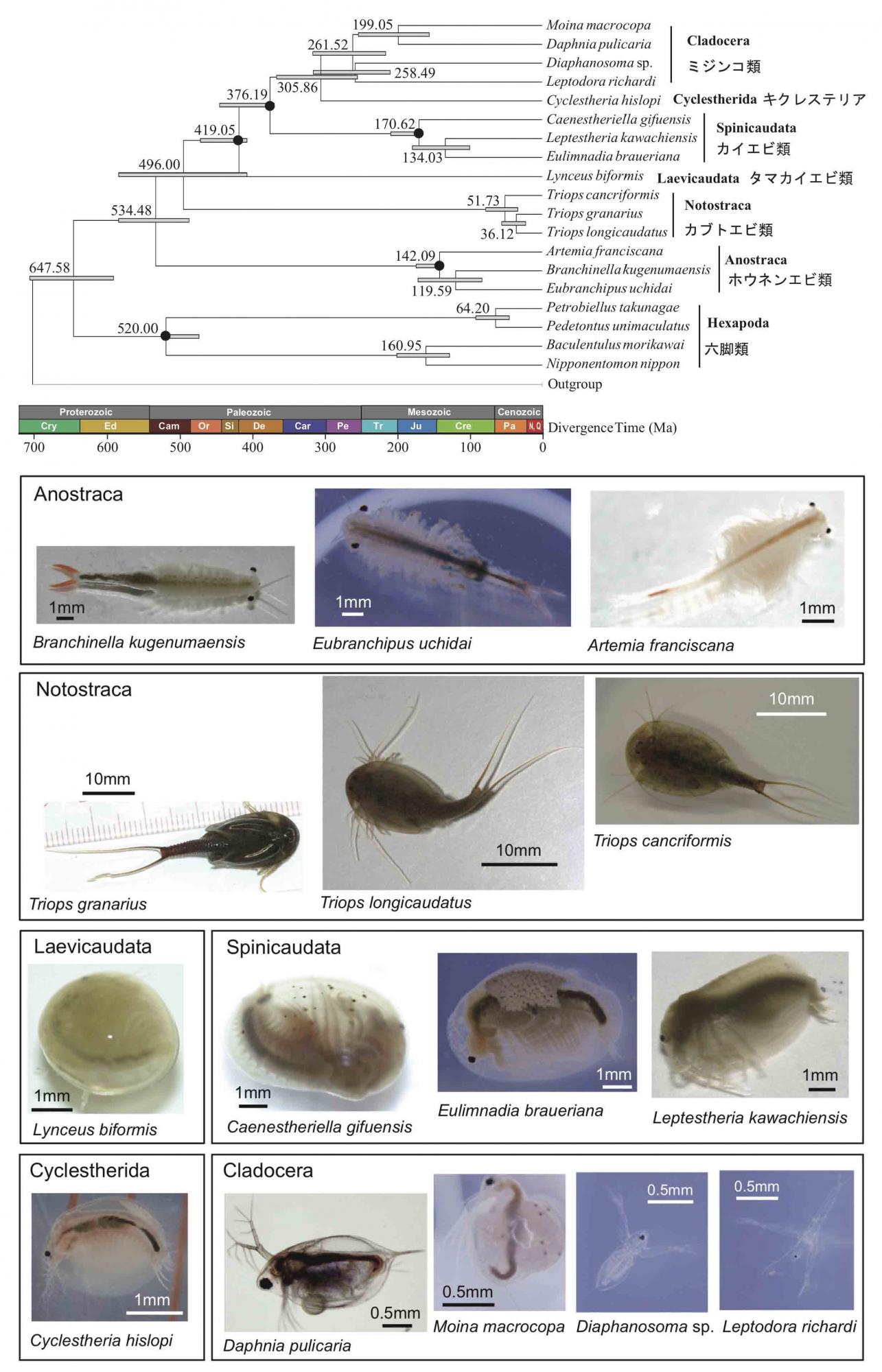Publication List
Uozumi, T., Ishiwata, K., Grygier, M. J., Sanoamuang, L.-o. and Su Z.-H. (2021)
Three nuclear protein-coding genes corroborate a recent phylogenomic model of the Branchiopoda (Crustacea) and provide estimates of the divergence times of the major branchiopodan taxa
Genes Genet. Syst. (2021) 96, p. 1–12
https://www.jstage.jst.go.jp/article/ggs/advpub/0/advpub_20-00046/_pdf/-char/en
The class Branchiopoda (Crustacea) shows great diversity in morphology and lifestyle among its constituent higher-level taxa: Anostraca, Notostraca, Laevicau-data, Spinicaudata, Cyclestherida and Cladocera. The phylogenetic relationships among these taxa have long been controversial. We sequenced three orthologous nuclear genes that encode the catalytic subunit of DNA polymerase delta and the largest and second-largest subunits of RNA polymerase II in the expectation that the amino acid sequences encoded by these genes might be effective in clarify-ing branchiopod phylogeny and estimating the times of divergence of the major branchiopodan taxa. The results of phylogenetic analyses based on these amino acid sequences support the monophyly of Branchiopoda and provide strong molec-ular evidence in support of the following phylogenetic relationships: (Anostraca, (Notostraca, (Laevicaudata, (Spinicaudata, (Cyclestherida, Cladocera))))). Within Cladocera, comparison of the nucleotide sequences of these same genes shows Ctenopoda to be the sister group of Haplopoda + Anomopoda. Three statistical tests based on the present amino acid sequence data—the approximately unbiased test, Kishino–Hasegawa test and weighted Shimodaira–Hasegawa test—tend to refute most of the previous molecular phylogenetic studies on Branchiopoda, which have placed Notostraca differently than here; however, our results corroborate those of one recent phylogenomic study, thus confirming the effectiveness of these three genes to investigate relationships among branchiopod higher taxa. Diver-gence time estimates calibrated on the basis of fossil evidence suggest that the first divergence of extant branchiopods occurred about 534 Ma during the early Cambrian period and that diversification within the extant branchiopod lineages started in or after the late Permian.

